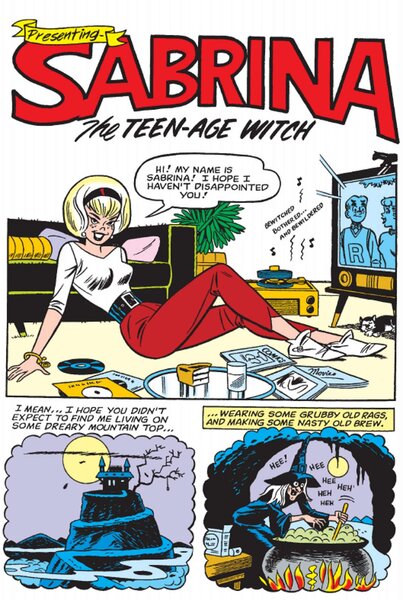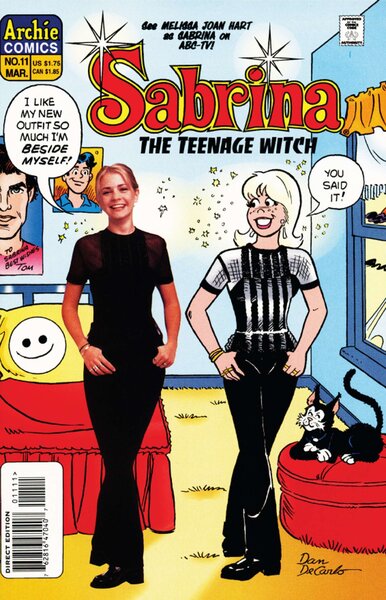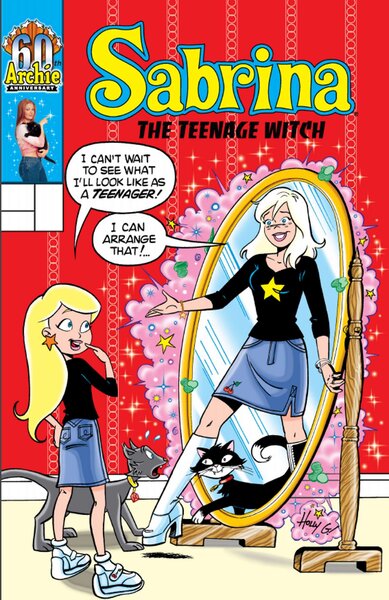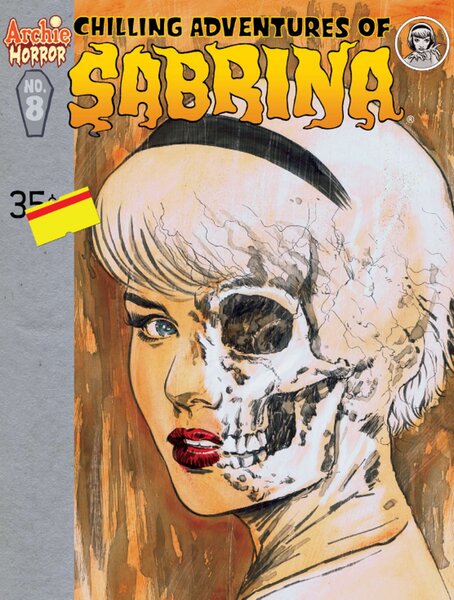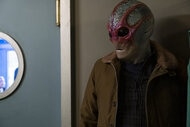Create a free profile to get unlimited access to exclusive videos, sweepstakes, and more!
Sabrina the Teenage Witch's comic book evolution
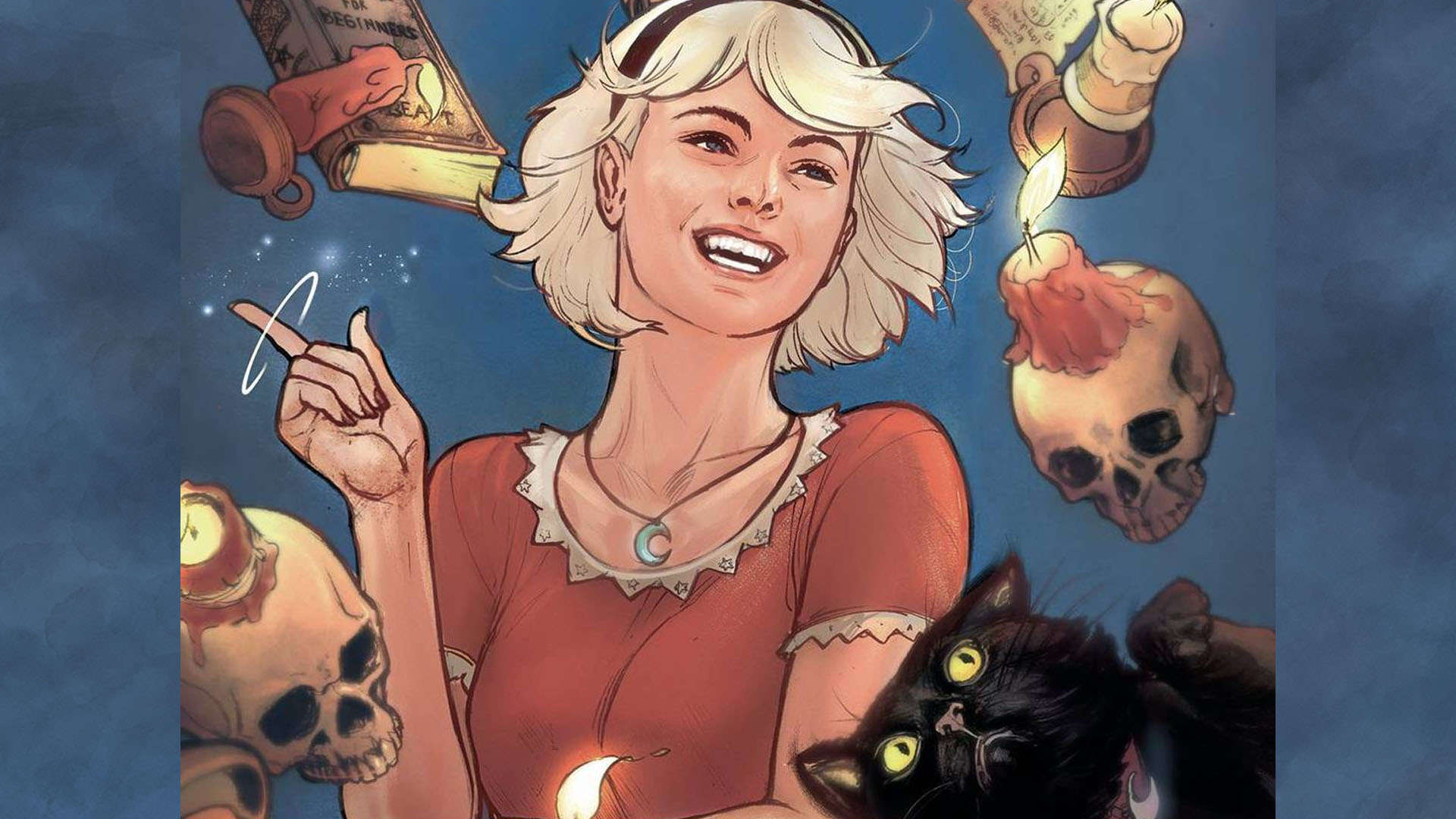
Sabrina the Teenage Witch is perhaps currently best-known for her horror-infused Netflix series, which had a critically-acclaimed run before news of its cancellation during the height of the coronavirus epidemic hit in July 2020. The series still has more episodes yet to air, but for now, this marks at least a temporary end to Sabrina's TV adventures.
Yet, there are always Sabrina comics to look to, and her history in the funny books is a journey of reinvention and adaptability. Seeing her debut appearance in Archie's Madhouse #22 in 1962, you'll recognize a witch who has been crucial to the continuing success and popularity of the Archie franchise. Much like her red-headed peer, Sabrina has consistently adapted to trends and changed with the times so that every generation since her debut has had their own take on the teenage witch. Regardless of her status on the small screen, Sabrina's is a comic book legacy decades in the making.
Sabrina's first comic book adventure was a short introduction story written by George Gladir and drawn by Don DeCarlo. Sabrina walks us through her day-to-day life in Greendale, telling the reader of the many trials of her life as a teen witch. Marrying the modern with the ancient for a comical effect similar to I Dream of Jeannie or Bewitched, Sabrina lets us in on the trials and tribulations of being a witch, including that she has no issues with using her powers to her benefit and that falling in love would cause her to lose her witchy strength powers. Sabrina delights in being a witch, so this worries her to no end.
Though she had been intended as a simple one-off gag story, Sabrina was a hit, and so she became a recurring guest star in Archie's various anthologies. She didn't get her own series until 1971, but when she did, it ran all the way to 1983. Sabrina's early adventures were similar in format to other Archie comics of the time in that, rather than long-form storytelling, they would focus on multiple short gag strips with a clear set-up and punchline, all aimed at a young audience.
Despite these stories being short and silly — in a good way! — they still managed to establish some of the more serious aspects of Sabrina's life. Trying to balance spending time with her love interests and committing to her training as a witch remains an essential trait. Most of Sabrina's stories are about her trying to take short cuts with her powers and kicking off a chaotic series of events by doing so, and this flaw is exactly what makes her such a relatable character all these years later.
Sabrina's aunts, Hilda and Zelda, Salem the cat, and Harvey have all been her most important recurring characters. Harvey is a well-intentioned person who is unaware of what a truly weird family Sabrina belongs to and Salem is a comic foil and friend for Sabrina. Meanwhile, her aunts, who are chaotic personalities in and of themselves, try to help Sabrina navigate the endless problems she finds herself in. The aunts have undergone seemingly endless redesigns over the decades, but for the most part, Zelda is the dominant sister that keeps things running, while Hilda is more sympathetic and willing to cut Sabrina some slack. They both clearly love Sabrina, and they accept the challenges that come with raising her. Occasionally, we see mention of their brother, Thomas, Sabrina's father, who mysteriously vanished years before.
In 1996, a comic series started as a counterpart to the then-current TV series starring Melissa Joan Hart. Covers often featured photos of Hart interacting with her comic book self via classic Archie-style puns. The effect is a little disorienting, with printing techniques of the era struggling to reproduce a clear image next to the bright, pop art color palette of Archie, but in the mid-'90s, this must have been awesome. The series ran for 32 issues, then transitioned into the third volume of Sabrina, this one based on her 1999 animated series. The comic version of the cartoon lasted longer than the cartoon did, but with #57, we saw another stylistic overhaul with Tania del Rio at the creative helm. This take on Sabrina was more inspired by manga than classic Archie comics, though they didn't lose the classic gag format entirely. We met a new cast of characters, and the format changed to focusing on longer story arcs. After the manga story wrapped, there was a brief story that focused on the adventures of Young Salem, back when he was human, before he'd become a cat. The series ended with #104 and Sabrina took a breather for a while and went back to guest appearances.
When the Archie line was revamped in 2015 to bring in a more mature audience with the New Riverdale branding, the gag style of the early books all but vanished from the pages in favor of longer arcs that dealt with more complicated dramas. Stories were now longer and significantly more serious, though many of the key personalities remained much the same. This change would go on to inspire the creation of CW's Riverdale and Netflix's Chilling Adventures of Sabrina, bringing a whole new generation of viewers up to speed on characters that had been around since the early ‘40s.
Sabrina made her appearance in this New Riverdale with Jughead #9, but it wasn't long before she warranted her own series. Rebooting her as a horror comic proved to be the update that the world needed after the character had somewhat lost her way, and Chilling Adventures of Sabrina was a hit. Most recently, Sabrina appeared in the revamped series, Sabrina the Teenage Witch, which was successful enough to be immediately followed up by a sequel.
There is a big difference in the 1996 and 2018 Sabrina TV shows, but her trajectory makes a bit more sense if you look to her comic book backstory, where she has undergone countless reimaginings. Still, though the details might change, the story of a chaotic but well-meaning teen witch coming of age is a perfect concept exactly because of that key versatility. Regardless of anything, it's a safe bet to say that Sabrina's comic book evolution is far from over.
